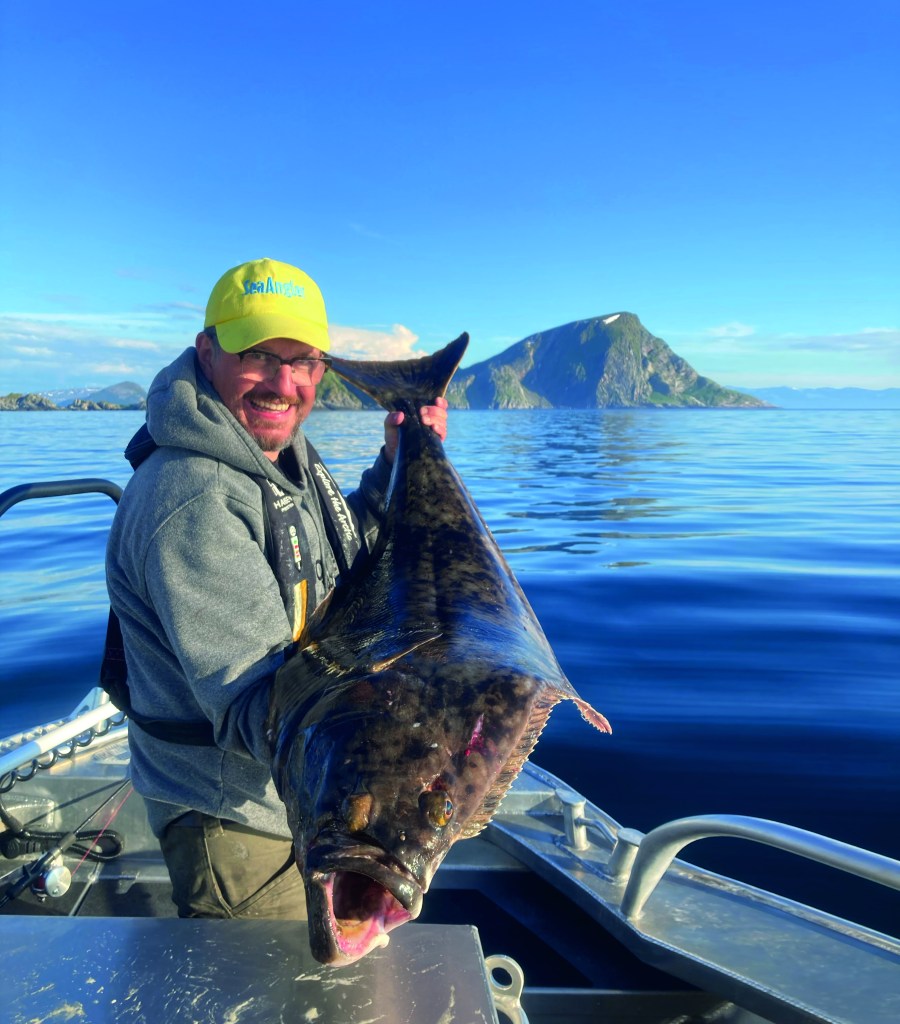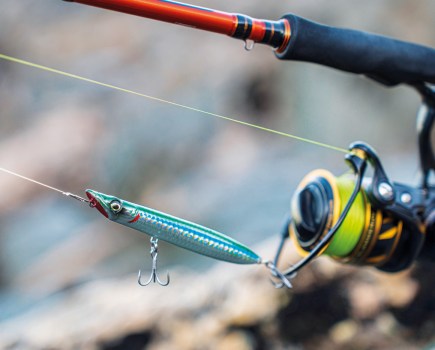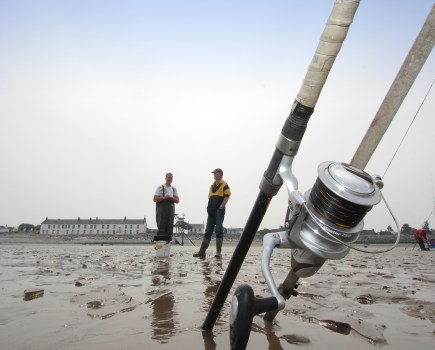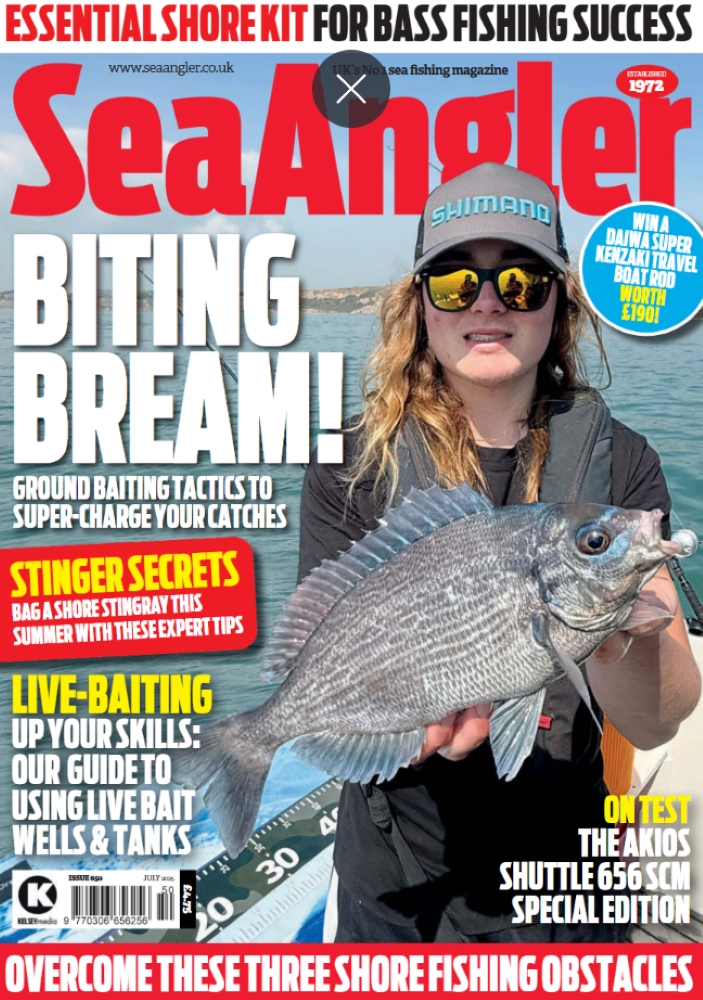Sea Angler editor, David Mitchell, heads off on a pioneering expedition to fish the shores of northern Norway’s uncharted coast.
“What time is it? Midnight? Noon? Early evening? It’s impossible to tell. In fact, what day is it even? Blood and sand!” The midnight sun was beginning to claim another victim: non-stop daylight leading to sleep deprivation, exhaustion and hallucinations. Ten hours solid fishing and not a bite between us. Damn these giant mythical Norwegian flounders! Yet we keep going. We keep fishing, relentlessly. Must…catch…fish.
Lauklines is a fishing camp on the island of Kavaløya, just west of Trømsø, 200m north of the Arctic Circle, in northern Norway. It was mid-June when, for two months of the year during the summer, the sun here never sets. Here I was, on an exploratory mission to assess the potential of the area for guided shore fishing trips for visiting anglers. Hundreds, if not thousands, of miles of unfished, unexplored, coastline lay in front of us. So much so that the decision of where to target was almost overwhelming. Hundreds of hours spent poring over Google Earth looking for fish-holding marks which, to be frank, all looked the same to the untrained eye.
Local knowledge wasn’t much help either: very few people fish from the shore here, everyone has a boat, and fishing for most locals is more like foraging or collecting wild food than a source of recreation, so nets, handlines or a rod are all considered fair game. Shore fishing as we Brits know it, particularly beach casting, simply isn’t a thing here – there has never been a necessity to blast baits 150 yards from a beach to find the cod, which is how the UK beach casting scene as we know it began in the 1960s. In Norway the cod are literally sometimes under your feet.
The exception to this is Lasse Bøe, an Anglophile Norwegian with a passion for UK-style beach fishing and a member of the Cox & Rawle team. Lasse’s shore record is formidable, including catching over 100 halibut from the shore. He had been invited to Lauklines to put his experience to the test and provide Markus, the camp fishing manager, with feedback in advance of inviting visiting anglers to fish the shores of this stretch of Norway’s north west coast.
This was Lasse’s second time to Lauklines having made the trip up earlier in the year at the invitation of Jakob, the youngest member of the Lauklines team. The 23-year-old Swede joined the camp two years ago as a novice guide working with fellow Swede Markus at Explore the Arctic, the well-established boat fishing operation which works in partnership with the cabins at Lauklines. A new guide was needed after the team decided to switch over to fully guided trips and stopping the self-hire boats which were more trouble than they were worth (more on that later). In fact, it was Jakob who first came up with the idea of offering guided shore fishing to compliment, or as an alternative to, the magnificent boat fishing that anglers from all over Europe, and further afield, travel to experience here year after year. Plenty of days of boat fishing get blown off by the weather and guided shore fishing provides a way of preventing a lost day’s fishing.
The Arrival
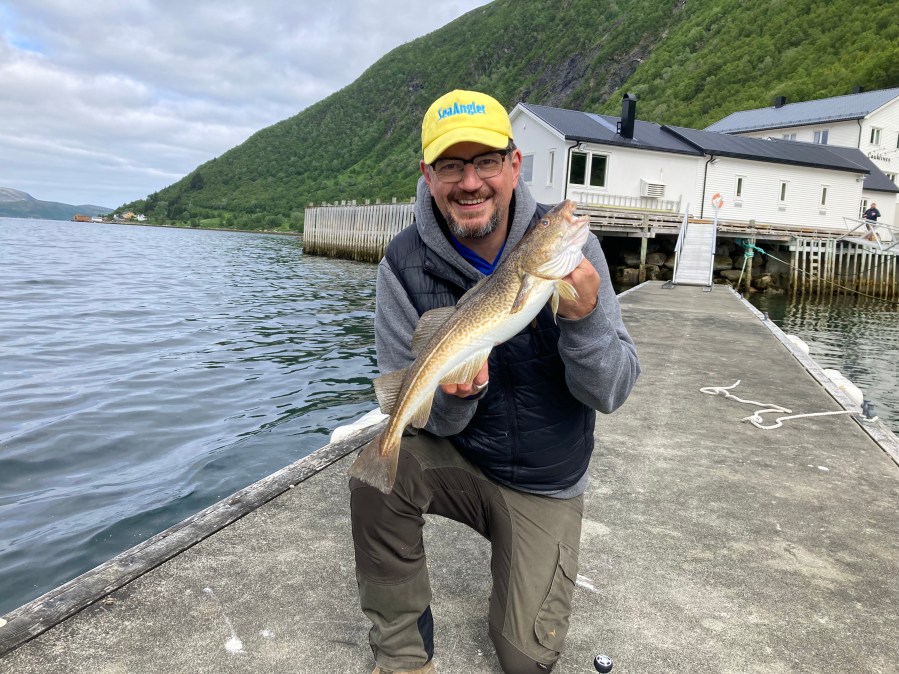
HATCHING A PLAN
A loose plan was made over coffee and beer as we gathered in the lounge on the evening I arrived. Hopes were high for a successful four days of fishing with the main target species being halibut, cod, coalfish, wolfish and, with a bit of luck, some of the giant dustbin lid sized plaice that these waters throw up. The camp’s jetty was swarming with halibut snack-sized coalfish of which a keep net of fresh bait was filled for the following day. Through the crystal-clear water five-pound cod could be seen cruising around below the coalies; present but judging by the relaxed nature of the coalfish shoals, in no mood to feed. In the end, a couple of cod were tempted by our lures and I could have kept on fishing from the jetty like this all evening had I not realised that it was the wrong side of 1am and we were planning to fish until we dropped for the following four days. We needed to pace ourselves and not let the midnight sun tempt us into fishing throughout the night.
Day 1
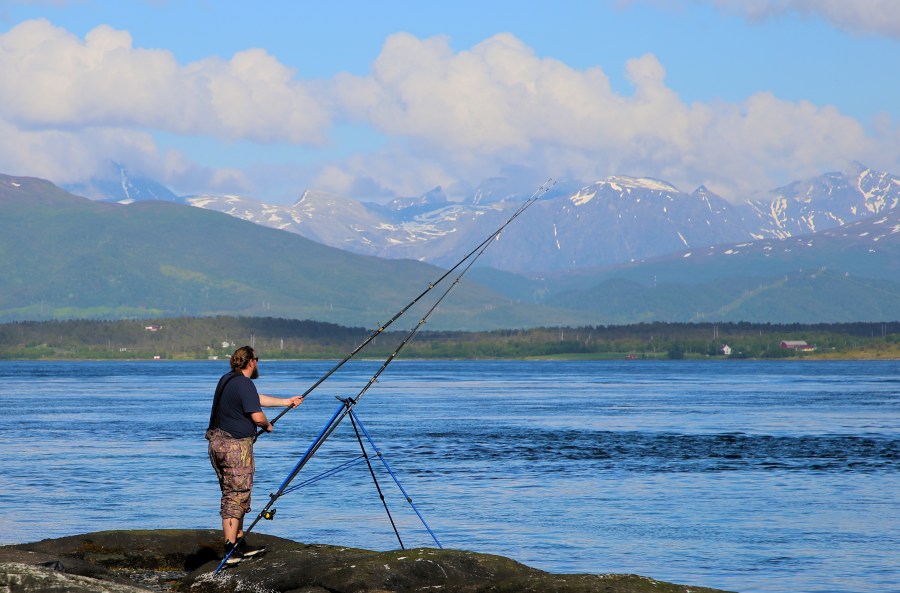
THE CURRENTS
The warm sun was beating down on the water but the mountain tops around us were still capped with snow as the short summer season here was yet to fully arrive. In front of us the kelp fronds floating on the water’s surface indicated the deep forest of weed and rocks below, the perfect habitat for prey and predators alike. With a strong current pushing the water, venue number one looked promising. And so, it proved, initially anyway, as the rod tip of my first cast tapped a couple of times before bending over. Picking up the rod to feel the weight of the fish induced a line-stripping run from the reel before a second later the braid parted company with the reel and the fish was gone. “That was a halibut”, said Jakob, as I cursed myself for losing the fish. Braid is fabulous to fish with, but as many have discovered, it can be devilishly easy to break under tension when it meets sharp objects, in a way than mono line isn’t. As disappointing as this was it was also a very positive start. Lasse, a few hundred yards further towards a bottleneck in the island that was creating nice eddies and back currents where fish might be waiting in ambush, was already into his fourth or fifth cod, nothing to write home about by Norwegian standards but steady bites non the less.
And then that was it. The bites dried up. We moved and fished the evening at two different marks on the other side of the fjord. Again, nothing. A new mark the following morning and, again, nothing. By the end of day three, three of us, fishing two rods each for an average of 10 hours a day, had lost another small halibut and caught a handful of small codling. At many venues we had simply blanked and were not even pestered by little bait-robbing coalfish or cod and no dabs took our freshly dug worm baits. To say we were deflated wouldn’t do justice to our emotions. Never before have I fished for so long and so hard, anywhere, and been rewarded with so little. To add to the frustration, we had lost countless rigs to snags and rough ground. Almost every mark we fished had a ledge close in before the seabed dropped off into deeper water. This meant every retrieve being at risk of snagging as it came back over the ridge, and many of them didn’t.
Days 2 and 3
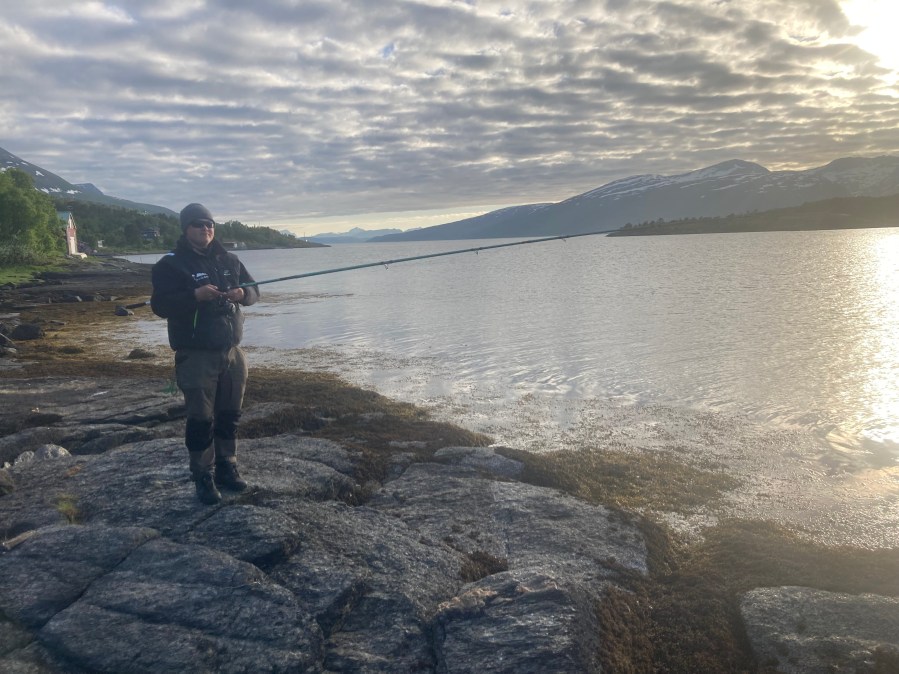
CONFIDENCE KNOCKED
So many hours staring at motionless rod tips had taken its toll on the collective confidence of the group and by midday on the third day, after another five hours of mojo-sapping nothingness, we agreed an afternoon and evening of R&R was in order. Metaphorical batteries needed recharging, new rigs needed tying, and besides, day four was the most ambitious adventure yet: travelling by sea to fish the shores of Bear Island. Jakob was clearly feeling the pressure too but, to his enormous credit, his enthusiasm and positivity remained rock solid even if Lasse and I were retreating to our cabin after another fruitless session only to scratch our heads over a beer and try to dissect exactly what the hell was going on here, and why the fishing had been quite to spectacularly poor. Every possible reason was analysed: was it the tides, water depth, water temperature, air pressure, plain bad luck or, heaven forbid to even consider it, our competence as anglers? Whichever way you looked at it, there was no way the camp was going to be able to offer guided shore fishing anytime soon based on our experience. Yes, anglers could come to fish here from the shore and explore it themselves, but they could do that anywhere in Norway, and at places with a much better track record of producing fish. What were we going to tell Markus and Andreas, the owner of Lauklines, who had invited us over as consultants? We would have to sleep on the question and sleep well we did.
BEAR ISLAND
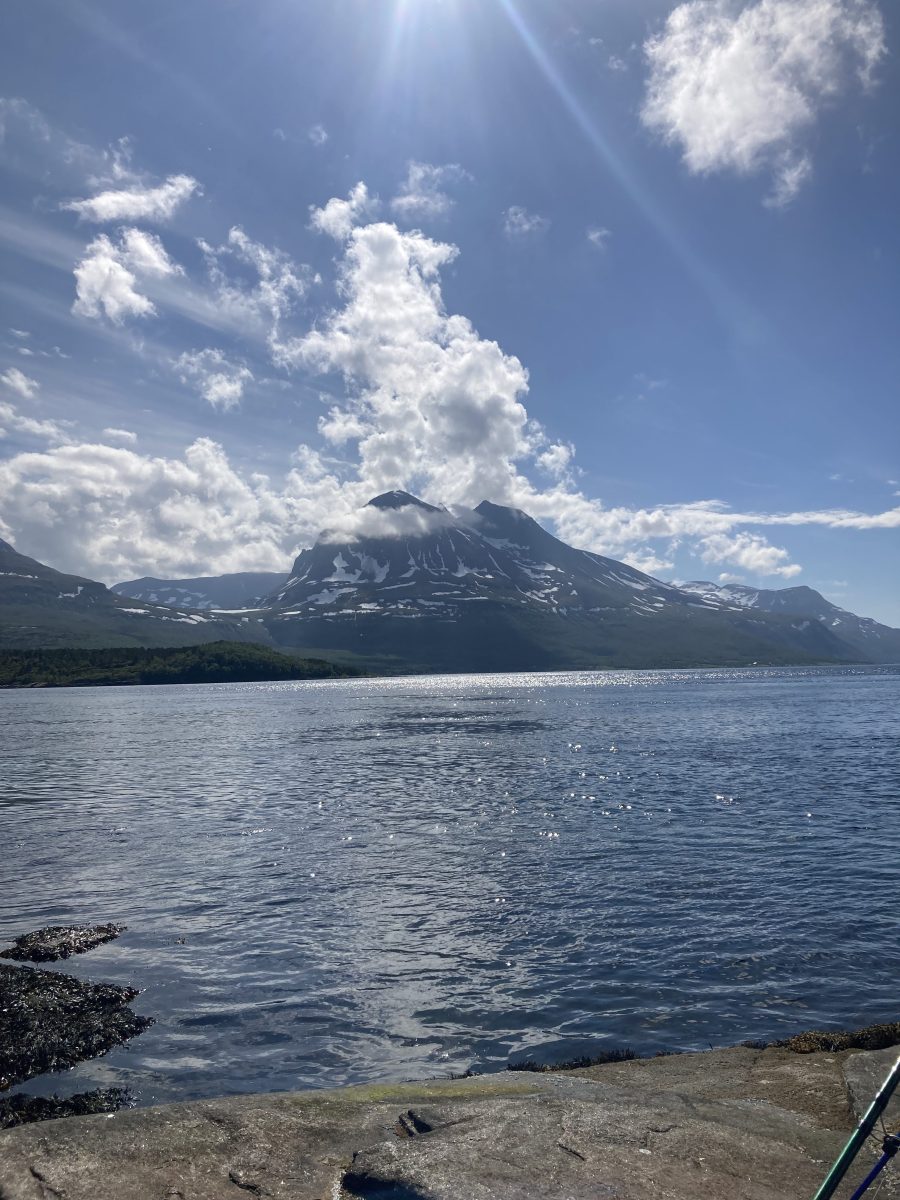
The Bear Island mission would involve us being totally self-sufficient for 12 hours on this uninhabited rock an hour’s boat ride away from the sheltered confines of the fjord. The plan was for Jakob’s colleague, Sven, to take us there by boat and collect us at the end of the day, or night (by now these words had ceased to mean very much). With everything loaded into the boat, including a tender to ferry us to and from the Island, we arrived with a refreshed sense of optimism and confidence. Jakob had suggested the venue as it’s a go-to mark where only a few hundred metres offshore they regularly take guests boat fishing to find halibut. In fact, it is where Markus had caught a two-metre fish the year before.
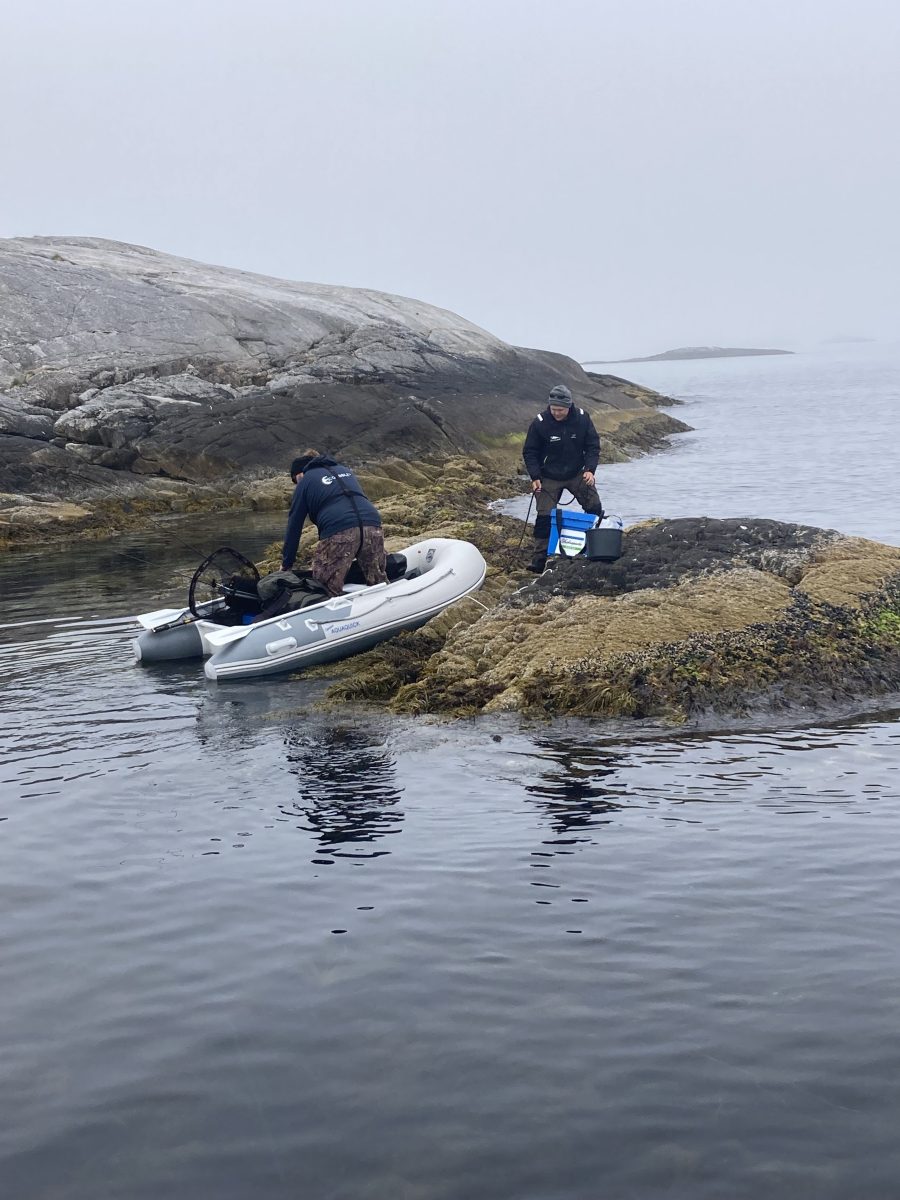
With sea eagles soaring through the morning mist yet again a series of fresh coalie baits were sent into the depths – dongle pulley rigs on the seabed and XL float fished baits drifting our offerings over the heads of the waiting cod and giant toothy flounders. One hour passed; one hour turned into two, and two into four – nothing. Young Jakob decided to venture further around the island and explore, taking with him a lure rod and some casting shads. Thirty minutes later, with still nothing to report, Lasse’s phone rang from an unknown number. Unable to hear anyone on the other end he hung up and we thought nothing more of it until shortly after Jakob returned from his exploratory mission across the island. “A halibut” he said, “I lost it at my feet. I tried to call you to come over but you hung up”. Three halibut hooked, three halibut lost. I think it was at that moment that we all collectively decided, in an unspoken way, that it was time to pull the plug on Bear Island. Our hopes had been dashed once again. However, it was mid-afternoon and if Sven was ready to collect us we could get a few hours in fishing from the boat before heading back to camp for the evening.
Boat Fishing
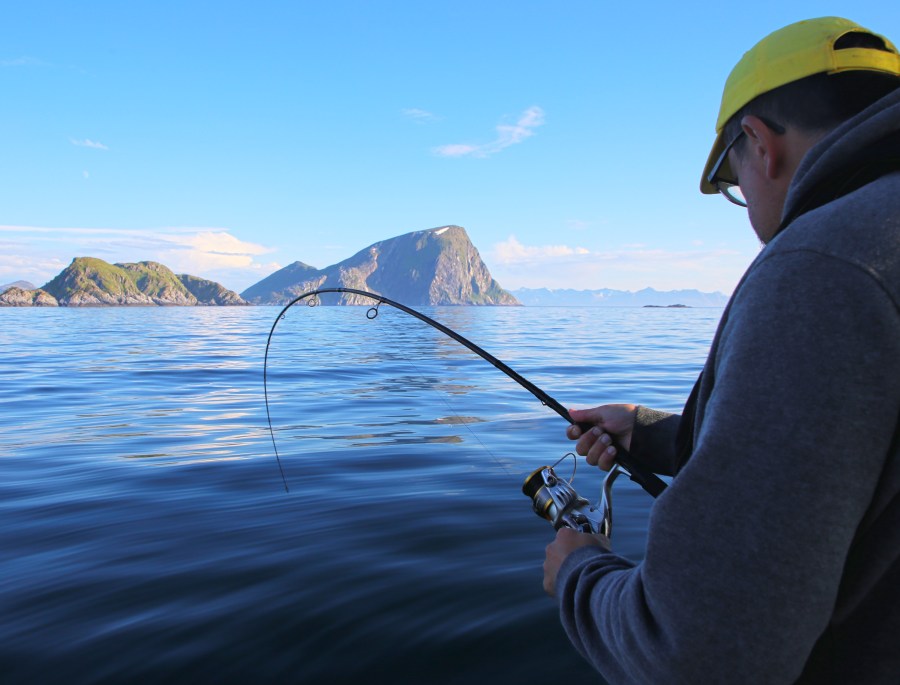
An hour later and we were now looking back at Bear Island from the water, scouring the seabed with the sonar looking for any fish to put a much-needed bend in our rods. Nothing spectacular but a steady stream of 5lb-7lb cod and some nice haddock kept us entertained and proved that there were fish present out here, if not within casting distance from the shore. With another drift set a sent my shad to the bottom and bounced it on the seabed. I’ve never caught a halibut before but it seemed to me that if there were any present this might induce these inquisitive fish to take a closer look.
“That’s a better fish”, I said, as I struck into a fish and the fish struck back. Sure enough, an initial line-stripping run caused Jakob to say just one word: “halibut!”
It could have been ten minutes or two hours – I have no idea. All I know, or was told afterwards by those onboard, was that my concentration on landing this fish was total and absolute. I didn’t utter a word. To be honest, I was terrified but also utterly determined and summoned powers of concentration I only wish I could muster in other areas of my life! “Not today, Mr halibut” I said to myself. “Today is my day, and I will not be beaten by you”.
SHEAR DISBELIEF
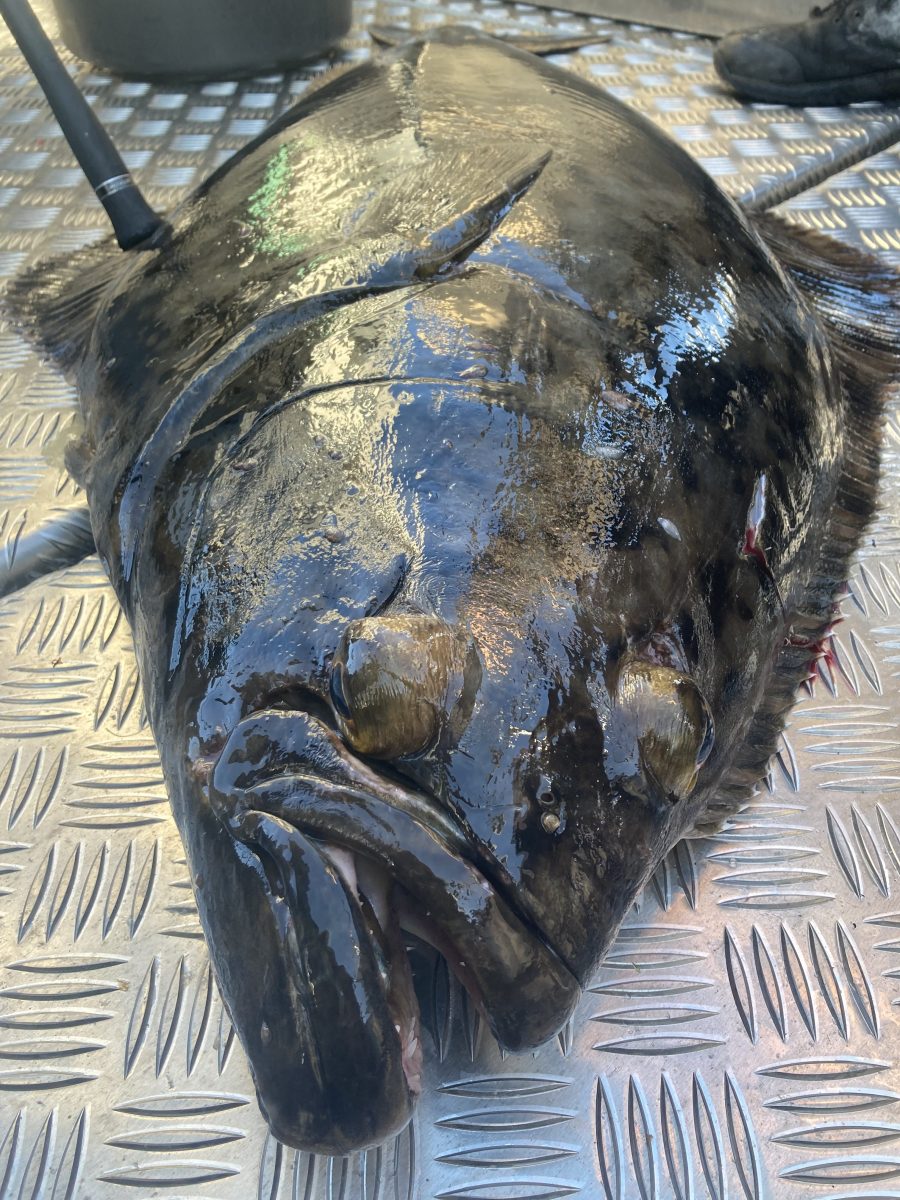
Only when I brought the fish to the boat and Jakob secured it with a rope did I allow myself to relax and with a roar a volley of mixed emotions came tumbling out: joy, disbelief, relief. I looked at the fish in the water again. There it bloody was, all 25kg of prime Norwegian halibut! My elation had been made so much more intense by four days of such barren fishing. I’m a naturally impatient person but I did appreciate the benefits of my delayed gratification – even if it had to be forced on me!
We fished on and, incredibly, within an hour both Lasse and Sven had added two more halibut and a wolfish to the boat. Only when Jakob called “lines up’ and we reeled in for a final time did I think about checking my watch. It was midnight on a Sunday evening. Unbelievably, we had been fishing for another five or six hours. The midnight sun had got me again.
The following morning, I sat down with Andreas to report back on what I had learned from the trip and how this could help them set up guided shore fishing at Lauklines. It was an opportunity to be honest about our experience and provide a reality check about what was required before launching guided shore fishing holidays. So, what had we learned?
- What had been brought into sharp focus was how the value of guided fishing is in the hundreds or thousands of hours of experience that the guide has gained. This learned knowledge is the expertise you are paying for and there really isn’t a shortcut to gaining it other than putting in the hours of fishing to understand where the fish will be, when, if they are feeding, why and how your clients can catch them. Even then, the most talented and experienced guides cannot guarantee success.
- Local knowledge is key. Lasse knows his home patch of coast like the back of his hand and could put us on fish all day long. However, that doesn’t necessarily translate to fishing elsewhere – as we saw. Marks are likely to be seasonal and successful venues will change throughout the year.
- Northern Norway may be a sea angler’s Valhalla, but the shore fishing on this part of the coast is tough. Most marks are extremely tackle hungry: kelp and rough ground ate our rigs as we lost one after the other to the seabed. Inexperienced anglers would struggle and constantly getting stuck and losing tackle is both demoralising and frustrating.
- Accessibility and ‘fishability’ is essential. It doesn’t matter how fishy a mark is if you can’t get access to is safely.
- Anglers could be invited to fish the shore here without being guided. However, with few catches to show them, and other camps and parts of Norway offering a more established and reliable track record, why would you risk coming to Lauklines?
Ultimately Andreas, Marcus, Jakob and crew need more time and much more experience fishing what are uncharted marks before a guided operation can be realistic for paying guests. While we had almost instant success on the boat compared to from the shore it’s unfair and misleading to compare the two. Wherever you are in the world, shore fishing is often a waiting game. You have to be willing to put in a lot of hours for success, which is why when it does come it can be all the more rewarding.
Despite the disappointment at how the week’s shore fishing panned out I’ll be back to Lauklines in a shot if the opportunity arises. It’s a stunning part of the world with plenty of other ‘country sport; activities on offer. Most important of all for me, new friends were made and fishing knowledge shared. I’m already looking forward to doing battle with Mr Halibut again, either from the shore or by boat, and hope that by then Lasse, Jakob, and others may have shed more light on how to fish here under the midnight sun.
To find out more about guided boat fishing from Lauklines visit:

